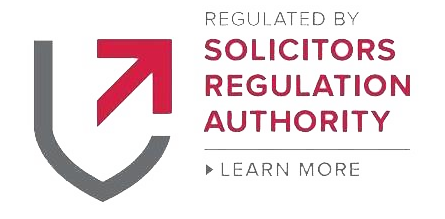Problems and issues can arise in the relationship between employee and employer. Most often, these can be discussed and addressed informally, as part of normal working life. Sometimes, it may be necessary either for the employee or employer, to use a more formal process to address the issues. This is what disciplinary and grievance processes are designed to do, in a fair and balanced manner.
Disciplinary procedures address issues an employer may have with an employee. Grievance procedures focus on problems an employee may be having with their employer.
Topics to be answered in this article
What are disciplinary and grievance procedures
Disciplinary and grievance procedures should provide a clear and open structure, enabling the fair and effective discussion and resolution of issues arising from an employer – employee relationship.
The procedures should be set down in writing, being clear and specific. The procedures are likely to be tailored to an individual company, however they must conform to UK law and adhere to the ACAS Code of Practice on disciplinary and grievance procedures. You should be able to find disciplinary and grievance procedures in your company handbook. A human resources (HR) team would certainly be able to provide the necessary details for you.
Disciplinary and grievance procedures are not designed as a first step. Informal attempts to resolve an issue should be tried first. This might form part of the normal interaction between employee and line manager, or as a specific meeting. In either case, it is a good idea for both parties to keep written notes, helping to establish the facts of the case. Most issues can be resolved in this way, with no formal action being required. Only once the informal route has been exhausted, should a disciplinary or grievance procedure be invoked.
Disciplinary procedures
Where an employer is unhappy with the performance or conduct of an employee, disciplinary action may be required. A formal process should be followed, addressing:
- Expected standards of performance and conduct.
- Consequences of not meeting these standards.
- Identifying issues or obstacles that may have led to an employee not meeting these standards.
- Putting in place a plan to address these issues or obstacles.
- Giving the employee a reasonable chance to deliver on the agreed plan.
This process not only helps overcome the problem or issue for both parties, but demonstrates to any future employment tribunal that an appropriate and reasonable process has been followed.
There are two main areas where disciplinary procedures may need to be followed, performance and conduct.
Discipline – Performance and Capability
Performance, or capability, is where it is thought that an employee is not performing to a required or satisfactory level of ability. The employer will need to be clear about what the required level is as well as identifying possible reasons why this is not being achieved. This may include a lack of appropriate training, or inadequate tools for the job. Any such issues should be addressed and documented before formal action is taken.
Ill health or extended sickness absence may be a factor in this category. Appropriate support and help should be given by the employer. Larger employers may have an occupational health department to help with such issues. Care should be taken to ensure that the employer complies with the Equality Act 2010. Whilst the employer is duty bound to make reasonable adjustments and allowances when dealing with ill health as a cause of poor performance, formal disciplinary action is still possible as an end result. Again, good practice is for both sides to document all actions taken along the way.
Discipline – Conduct
Misconduct occurs when an employee exhibits inappropriate behaviour or breaks workplace rules. This might include:
- Bullying or harassment.
- Theft or other criminal offence.
- Failure to carry out work or follow reasonable instruction from a line manager.
- Fighting / violence.
- Continued lateness or absence without a valid reason.
- Abuse or misuse of a company’s resources, including inappropriate internet access.
There is a more serious level of misconduct, known as gross misconduct. This might include malicious damage, physical violence, or fraud. Although there is no definitive list as to what constitutes ‘gross’ misconduct, examples are often cited in an organisation’s disciplinary policy documentation. Gross misconduct can lead to immediate dismissal. However, the employer will still need to follow a formal process which includes giving the employee the opportunity to respond and challenge the action.
Disciplinary Process
Clear guidelines have been laid out by ACAS for the disciplinary process. Following on from informal discussions, the formal process is likely to be made up of three main components.
- A letter, formally advising of the action and laying out the nature of the alleged issue.
- One or more meetings, where the process and issues are discussed. The employee can be accompanied if they wish.
- An appeal process, in the case where the outcome is not satisfactory to the employee.
As previously mentioned, it is important that both parties have kept note and records of anything they feel is pertinent to the case. This might include emails, texts, notes of timings of phone calls, minutes of meetings etc. This will help establish the facts of the case and ensure a just outcome.
The outcome of the disciplinary process is likely to be one of three.
No action to be taken: This does not mean there are no issues. For formal action to have been taken, there is likely to have been an underlying problem. For example, a lack of clarity with the tasks given to the employee or perhaps unrealistic timescales for the work to be done. It is important that both sides learn from the findings and make appropriate adjustments.
Written warning: Either a First or Final written warning may be decided. This letter should state how long the warning will stay on the employee’s HR record and may include suggestions about how to avoid a reoccurrence.
Dismissal: ACAS says that there are five reasons for a fair dismissal. The employer should satisfy themselves that their decision to dismiss is in line with these reasons and is proportionate.
If at the end of the process the employee feels that the decision is not appropriate, they have the right to take the case to an employment tribunal.
Grievance
A grievance can be raised when an employee has a complaint or feels they have been mistreated. As with issues of discipline, these should be raised informally first and an attempt made to resolve the issues without resorting to a formal process. Line managers should encourage their staff to discuss any day-to-day issues, and attempt to resolve these quickly. Both parties are advised to keep notes, and to actively seek resolution.
Should it not be possible to resolve the issue informally, then a formal procedure will need to be invoked. The company or organisation should have a formal policy and procedure, which should adhere to the ACAS code. The process should include how to raise a formal complaint, what support is available, likely timeframes for the process and any escalation routes. Support for the employee can be provided by either a trusted work colleague or trade union representative.
There will be an appeal process, if the employee is not happy with the outcome. This often involves a manager or senior employee who has not been involved with the original process.
Summary
Disciplinary and grievance cases are not uncommon, however it is in everyone’s interest to try and resolve issues before formal procedures need to be followed. ACAS, the Advisory, Conciliation and Arbitration Service, have useful information as to best practice in this area. Specific procedures, in line with this best practice, should be clearly laid out by the employer. Where an employee feels that this is not the case, or that the outcome of the process is unfair or factually wrong, they can consider an appeal. Independent legal advice may be appropriate in this circumstance.





